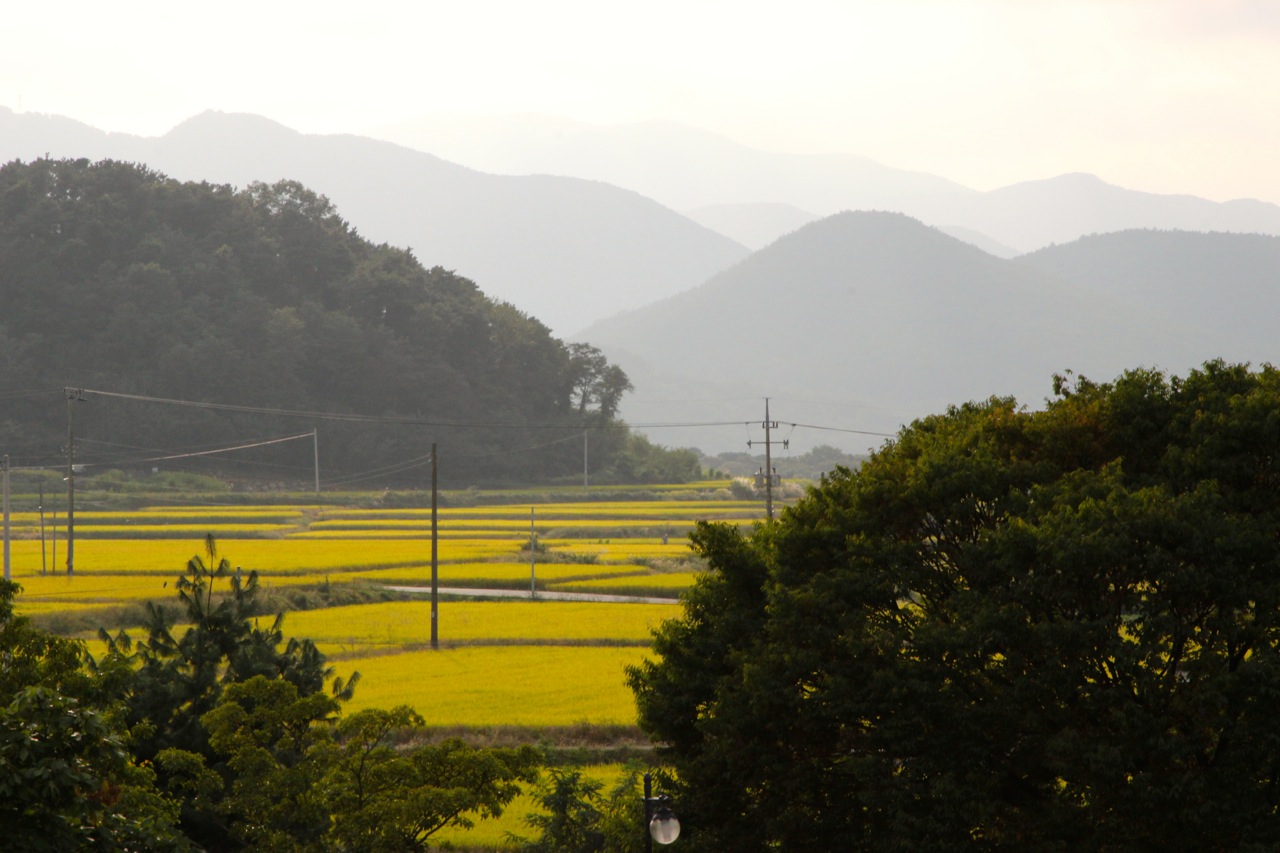From Busan, we took the train to Gyeongju, Korea’s ancient capital during the Silla period. It’s filled with historic sites, museums, and I was also forced to come to terms with my friend, the bus.
Our guesthouse was traditional Korean style, with some of us sleeping on the floor, and some of us sharing a larger room with beds. The proprietor of the hostel had a cute doggy named after the town, and the bathrooms were outside. The website described the toilets as “uncomfortable but delightful.” I’m sold!
On our first day, we stayed in town to visit some of the more popular sites. We were expecting to get through things more quickly, but many of the historic sites also had larger, well-maintained parks attached.
First, we went to Daereungwon, one of the larger collections of burial mounds that dot Gyeongju. The park was quite nice and we went for a longer walk around all of the mounds.

Most of the mounds are professionally mowed and left at that, but there was one you could enter one to see how it was constructed and some of the items that were buried inside. Unfortunately, no pictures were allowed inside 🙁
From Daereungwon, we cabbed it over to the tomb of General Kim Yu-shin, a famous general who led the unification of the Korean peninsula. His tomb was up in a mountain park.
Here we started seeing more signs of fall – some of the trees were beginning to turn a brilliant shade of orange.
We ascended a trail to the burial mound, and by ascend, I mean it was a lot of stairs. At the top was a tiny child who wondered at our whiteness and orbited me as I took pictures of items around the tomb, until her mother presumably yelled “leave those weird foreigners alone!”

Since cabs are the greatest, cheapest invention in Korea, we hopped into another cab to go see Cheomseongdae, an ancient observatory.
Cheomseongdae was surrounded by tiny children on a school field trip. Tiny children everywhere here really like to say hi to us – most friendly kids ever. We make a point to say hello back, but we tried Korean out on a few of them. We’re not sure if they were laughing at us or just genuinely surprised that we’d attempt Korean…there were a few kids we genuinely surprised with our language (in)abilities 😉
Anyway, Cheomseongdae. The stones used in its construction are all symbolic. Each stone represents a day in the lunar calendar, and the sets of twelve stones represent the twelve months in the year. Previous observers used to climb into the window via a ladder to observe the movements of the stars. It’s the oldest in East Asia.

Cheomseongdae is at the northern end of a park. We took the trails in the park to Anapji, one of the old pleasure palaces. The pond was filled with koi, and there were many walking paths around the buildings.

None of the structures were original – there used to be about twelve structures (I think), but only three were rebuilt based on the presence of the foundation stones. They also had many artifacts on display in the buildings, many of which were replicas of artifacts they found in the pond.

At night, the pond and the buildings lit up, and music kept playing from the speakers. Korea really likes playing soothing music near all of its monuments, and they don’t make much of an attempt to blend the speakers in with their surroundings.
Some of the other things we wanted to see were a bit far out, so we finished our day with a trip to the national museum.
This museum featured a lot of traditional art outdoors, so it was pretty cool to see some of it on display and not behind a case. One of the items on display was a huge bell – the Emille bell. It was later that we learned the bell had problems during forging and it is rumored that in order to make this bell properly, a child was thrown into the molten metal before it was cast. It’s said that the ring of the bell emulates the child crying for its mother.

After touring the galleries, we decided to try some McDonald’s because we cannot deny our heritage…
Next up: around Gyeongju!

